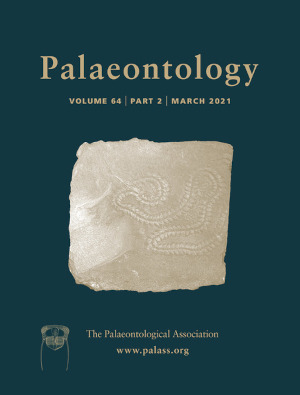Reg. Charity No. 1168330

Sample size is a challenge for most field scientists determined not by the statistically ideal, but by the available. In vertebrate ichnology, track length is an important variable correlating well with the track-maker’s biology. It is also key to estimating the minimum number of individuals (MNI) present on a trampled horizon. Broad assumptions on biometrics of the track-makers are often made based on a few prints without consideration for intra-trackway variability. In this study we use a simple bootstrapping algorithm to explore variance within sample size for a range of trackways with fossil and experimental examples to determine the minimum sample size required to extract linear measurements. Predictably, experimentation shows that inter-step variability changes with track-maker and substrate, but the degree of variance is not as marked as previously anticipated. Change-point modelling suggests that a maximum sample size of 22–25 captures most of the variance present in track length at least; another threshold at 7–10 has been identified, which represents the reasonable sample size minimum. Samples of fewer than seven tracks are subject to large amounts of potential variance and are unlikely to provide reliable and consistent measurements. These sampling thresholds hold across a wide range of depositional environments and track-makers. We calculate generic standard errors for human track-makers which may assist the practitioner with small samples to estimate the likely errors, especially when making MNI estimates. The challenge is placed to the wider vertebrate ichnology to explore this issue for other track-makers and develop similar guidance.
AcknowledgementsWe wish to thank Dr Zarah Goshi (AstraZeneca PLC) for suggesting the statistical approach in the context of another project. We wish to thank the editor and the two reviewers (J. Lallensack and M. Buchwitz) for the comments and suggestions that helped to improve this paper.